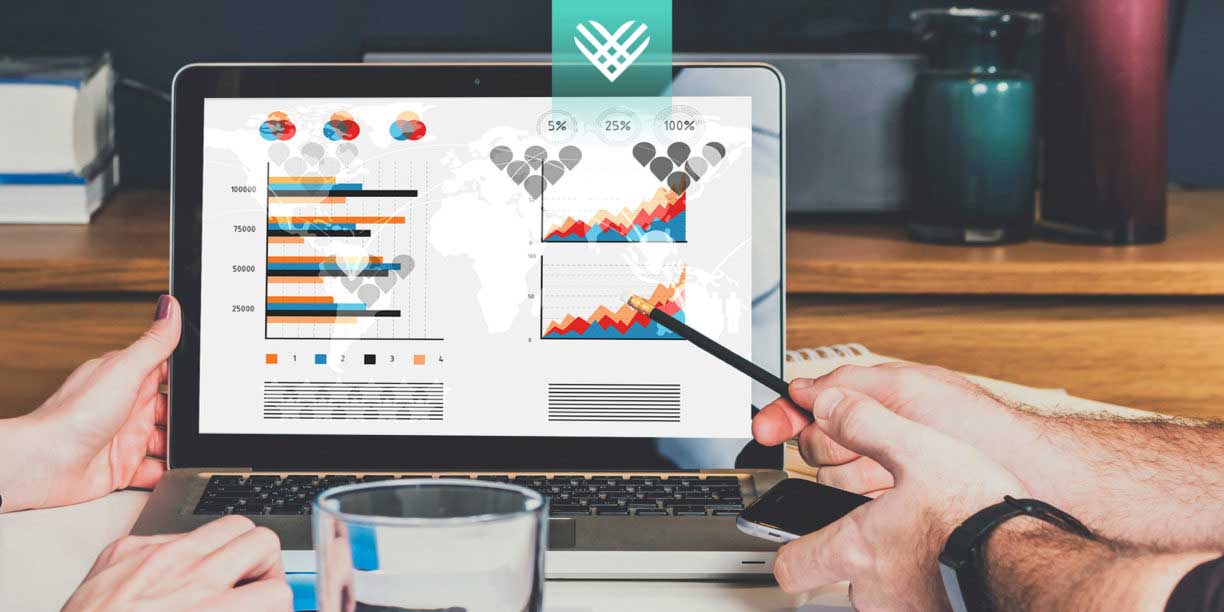No More Disparate Data: How Salesforce Changed Donor Data for Nonprofit Organizations

Request a Demo
Learn how top nonprofits use Classy to power their fundraising.
By now, Salesforce has long been a leading force of innovation in online software. The power and flexibility of the cloud make it a popular CRM (constituent relationship management) platform, while the growth of the Salesforce Foundation and the availability of the Nonprofit Starter Pack has enabled more nonprofits to become Salesforce clients. In this post, we’ll briefly explore how Salesforce became a top CRM for nonprofits and, then, how the software-as-a-service is equipping nonprofits to achieve sustainability.
First, a Little Salesforce and Salesforce Foundation History
When Salesforce CEO and Founder Marc Benioff launched the company in 1999, his vision for a cloud-based computing system was groundbreaking at the time: unlike traditional software installations, users would access the database over the web. More notably, Benioff sought to engrain a philanthropic commitment into the company’s DNA. At the same time as the company’s inception, its charity counterpart – the Salesforce.com Foundation – was created.
The Foundation employs its “1/1/1 model”, which donates 1% of Salesforce’s time, equity, and product to philanthropic endeavors. Since 2009, the Foundation has been providing limited Enterprise Edition licenses to nonprofit organizations, making up an average of $15,000 worth of software.
Today, more than 20,000 organizations use Salesforce for their CRM solution – a huge jump since 2008, when the Foundation provided software to about 5,000 organizations. With access to the software’s data-tracking capabilities, an increasing number of nonprofits have been able to leverage tools that help improve their overall internal management and donor engagement.
How a CRM for Nonprofits, Like Salesforce, Helps You:
1. Streamline Internal Management Through Centralized Data
Interestingly enough, this falls in line with recent trends that show nonprofits are looking to adopt software solutions to improve all aspects of their operations. For example, improving donor retention requires being able to effectively manage and track donor data; however, this can be painstaking if the information is recorded manually or spread out among various storage mediums. Without an efficient way to track data, organizations can be inhibited from analyzing important information and improving their performance.
Organizations should track every interaction they’ve had with a donor or volunteer, including phone calls, emails, meetings and donations. Through a web-based CRM for nonprofits, such as Salesforce, multiple users can access this information from different locations, collect donor interactions into a single database, and prevent repeat efforts when contacting supporters.
iEmpathize, an organization working to eradicate child exploitation, facilitates staff cohesion by leveraging the ability to fuse multiple interfaces into just one. Mike Smith, the director of donor development, says, “We are tracking and developing our donors, managing and engaging our volunteers, and organizing and assigning tasks for our staff. As our staff often works remotely, Salesforce has helped us improve our staff’s communication and collaboration, and this has translated into better efficiency and effectiveness.”
2. Grow
Consolidated data within a CRM give nonprofits the power to analyze and improve the way they interact with donors. With the ability to track and pull a range of reports, NPOs can better understand their supporters’ giving habits, analyze donor trends and engagement levels, and identify opportunities for larger contributions.
Overall, organizations are empowered to personalize communication strategies, grow their donor base, and increase donations while making data-informed decisions.
For Team Rubicon, a nonprofit that unites and deploys military veterans in disaster relief efforts, the goal was to cultivate a more data-centric culture. Matt Scott, Team Rubicon’s online donation and donor engagement coordinator, says, “For us the biggest value of using Salesforce comes in its robust reporting and analytics capabilities… For every decision we make, we have data backing it up.” By properly analyzing the data tracked in Salesforce, organizations can remove any guesswork around their fundraising, marketing, and operational strategies and make informed decisions to achieve growth and scale.
3. … and Keep Growing
“That’s what sets Salesforce apart,” Scott says. “It’s not a single-source solution, meaning that if we have an email marketing, fundraising management, or inventory management solution we want to implement, we can have various systems integrate altogether in one place.”
While organizations can benefit from using data to make decisions across all fronts – from marketing, to fundraising, to event management – managing these systems independently from each other can be tedious and expensive. But with its integration flexibility, an open-source CRM system like Salesforce allows nonprofits to feed different applications into the platform. This enables organizations to aggregate all of their information into one place, streamline their reporting, and practice a holistic data-driven approach to donor engagement, without tripling their staff size.
Smith of iEmpathize asserts that this flexibility makes the platform a robust database solution. “The top reason for nonprofits to use a CRM, or Salesforce specifically, is to consolidate the multiple systems they may currently be using into one,” he says.
Another organization called National Aquarium, which works on aquatic conservation and education, also finds the centralized workplace a huge plus. Stephen Rockwell, the organization’s vice president of information technology, says, “Salesforce is a modern CRM that has all the capabilities that you are looking for to run a fundraising operation. It is also extremely customizable to an individual organization’s needs and extensible through the apps on the AppExchange.”
The AppExchange is an online marketplace of downloadable tools for the Salesforce community, many of which are customized for nonprofits.
Whether they explore new apps or consolidate their current systems, organizations can adjust and extend the platform as desired. This allows them to create a breadth of reports with data from multiple sources, and improve the accuracy of the insights into their performance. In turn, organizations can make data-informed decisions around each of their specialized needs. Whether they use the platform to track volunteer information and skill-sets, or to determine exactly when to reach out to power fundraisers, nonprofits can generate the reports they need to improve personal communication with supporters and reach their next level of growth.
Conclusion
By providing robust data-tracking and reporting capabilities, a CRM solution like Salesforce can help nonprofits streamline their internal management, analyze donor engagement and deepen their connections to supporters. They can transition from guessing next steps to making data-driven decisions, thereby optimizing their communications tactics and overall efficiency. With quantitative analysis backing their decisions, organizations can focus on pursuing their mission and make significant strides toward their cause.

How Data-Driven Decisions Set You Up for Growth
Subscribe to the Classy Blog
Get the latest fundraising tips, trends, and ideas in your inbox.
Thank you for subscribing
You signed up for emails from Classy
Request a Demo
Learn how top nonprofits use Classy to power their fundraising.
 Explore Classy.org
Explore Classy.org 

